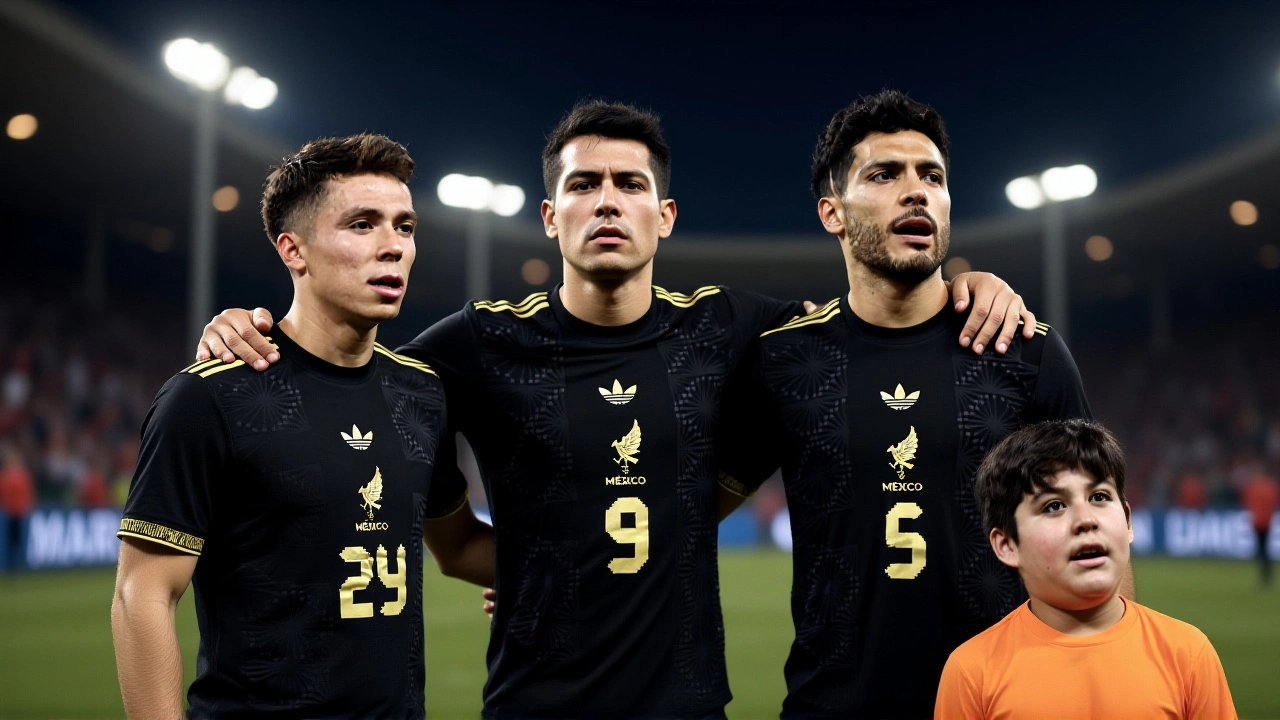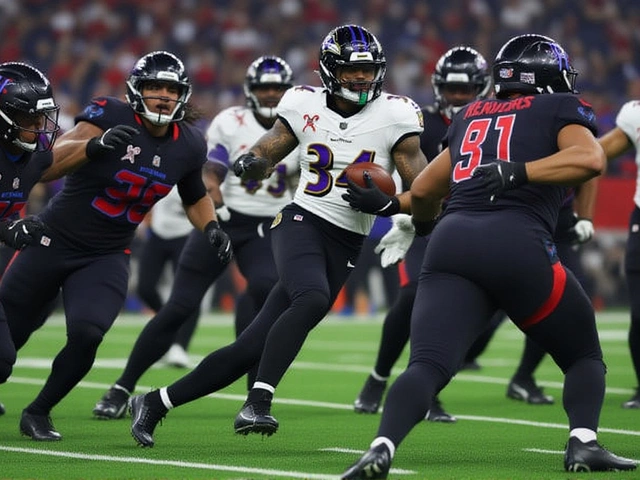Two friendlies. Two very different stories. Mexico’s Mexico national team showed grit and discipline against Uruguay—but crumbled under pressure in the final minutes against Paraguay. The results, delivered across a tight three-day window in November 2025, laid bare the fine margins between resilience and recklessness as the team prepares for next year’s World Cup qualifiers.
Defensive Resolve in Torreón
On November 15, 2025, under a cool Texas-border sky in Torreón, Mexico held Uruguay to a 0-0 draw. It wasn’t pretty. It wasn’t flashy. But it was stubborn. With Uruguay’s famed physicality and relentless pressing, Mexico’s backline—led by César Montes and Jesús Eduardo Reyes—absorbed wave after wave. The standout moment came in the 90'+5' minute, when Uruguay’s Santiago Mele denied Johan Vásquez’s diving header, a moment that encapsulated the match: near-misses, tight spaces, and zero reward. "It was a battle of wills," said one anonymous Mexican assistant coach post-match. "We didn’t create much, but we didn’t give them anything either. That’s progress." The match, documented by ESPN with timestamps from the 38th minute through 90'+5', saw few clear chances. Mauricio Pochettino, head coach of the United States Men's National Team, was reportedly watching from afar, analyzing how his future rivals in the 2026 World Cup were shaping up under Marcelo Bielsa. Uruguay, fresh off a 5-1 thrashing of the USMNT earlier this year, came into this game with a chip on their shoulder—and came away frustrated.The Alamodome Collapse
Three days later, in the cavernous Alamodome in San Antonio, Texas, the script flipped. Mexico’s defense, which held firm against Uruguay, vanished in the second half. Paraguay struck early: Antonio Sanabria slotted home in the 48th minute after a swift counterattack. Mexico’s response was immediate—but not entirely deserved. In the 54th minute, Raúl Jiménez converted a penalty after Diego Pineda was brought down in the box. Fox Deportes’ highlights captured the moment: "JIMENEZ SCORES. THE FALLEN STEP FROM THE STRIKE AND AN EMPHATIC FINISH AND AN INSTANT RESPONSE FROM MEXICO. 1-1." For a brief, hopeful moment, the crowd roared. The team celebrated. The comeback felt real. It lasted 120 seconds. By the 56th minute, Damián Bobadilla—a 24-year-old midfielder making his international breakthrough—pounced on a loose ball after a scrambled clearance and fired low past goalkeeper Ángel Malagón. The goal wasn’t a work of art. It was a mistake. A lapse in concentration. A failure to track a runner. And it was enough. The final whistle blew at 90'+7'. Mexico had held possession. They had more shots. But Paraguay, the underdogs, had the nerve.Who’s to Blame? Who’s to Trust?
The lineup changes between matches were telling. Against Uruguay, Mexico started with Hirving Lozano and Raúl Jiménez up front. Against Paraguay, Lozano sat out. Jiménez remained—but the supporting cast changed. Carlos Rodríguez Ruiz and Érick Sánchez Álvarez played both games, but the midfield lacked cohesion. Luis Lira, who started against Paraguay, was outmuscled repeatedly. Uriel Chávez, at left-back, looked out of position. Coaching decisions raised eyebrows. Why rotate key players between friendlies? Why give minutes to fringe players like Jorge Ruvalcaba and Diego Pineda in high-stakes moments? And why, after a clean sheet against Uruguay, did the defense suddenly forget how to defend? "It’s not about talent," said a former Mexican international, speaking off the record. "It’s about consistency. You can’t play like you’re in a training drill one day and a World Cup qualifier the next. The gaps between these games are too short to fix what’s broken."
What This Means for 2026
Mexico’s path to the 2026 World Cup—hosted by the U.S., Canada, and Mexico—depends on qualifying through Concacaf’s brutal final round. These friendlies were meant to test depth. Instead, they exposed fragility. The team can grind out results when organized. But when the pressure rises, the structure cracks. The 0-0 draw with Uruguay, a team that reached the 2022 World Cup quarterfinals, should be seen as a moral victory. But the 1-2 loss to Paraguay—a side that barely qualified for Qatar 2022—is a red flag. The upcoming qualifiers against Costa Rica, Panama, and the United States won’t offer the luxury of a 90'+5' save to salvage a draw. They’ll demand precision. Leadership. And above all, mental toughness.What’s Next?
Mexico’s next international window is in March 2026, with two World Cup qualifiers scheduled. Head coach Miguel Herrera (who replaced the interim staff after these friendlies) will need to decide: Do you trust the veterans like Jiménez and Montes, or do you gamble on youth like Bobadilla’s counterpart, 19-year-old forward Sebastián Sánchez? The roster will be narrowed. The pressure will intensify. And the lessons from November 2025—both the discipline in Torreón and the collapse in San Antonio—will be studied in film rooms from Guadalajara to Monterrey.Frequently Asked Questions
Why did Mexico lose to Paraguay despite having more possession?
Mexico had 58% possession and 14 shots compared to Paraguay’s 7, but the key issue was defensive discipline. Paraguay’s winning goal came from a turnover in midfield, followed by a quick transition that Mexico failed to track. The team’s center-back pairing—Jesús Eduardo Reyes and Luis Ernesto Orozco—was caught out of position twice, and the fullbacks didn’t provide adequate cover. It’s not about quantity of chances, but quality of defense.
How significant is Raúl Jiménez’s penalty goal against Paraguay?
It was crucial for morale, but also a sign of dependency. Jiménez, 34, is now Mexico’s most reliable finisher, and his penalty conversion rate remains elite (8 of 9 in international friendlies since 2023). But the fact that Mexico’s only goal came from a spot kick highlights a lack of creativity in open play. Only 2 of their 14 shots were on target. If Jiménez is injured or suspended during qualifiers, Mexico’s attack loses its most consistent weapon.
What role did the venue play in Mexico’s performance?
The Alamodome is a neutral venue, but its artificial surface and echo-heavy acoustics disrupted Mexico’s passing rhythm. Players reported difficulty hearing instructions from the bench. The match was played at 8:30 p.m. ET—prime time for U.S. fans, but not ideal for a team used to playing in high-altitude Mexican stadiums. The environment favored Paraguay’s direct style over Mexico’s preferred build-up play.
Is Marcelo Bielsa’s Uruguay still a benchmark for Mexico?
Absolutely. Uruguay’s 0-0 draw with Mexico was their first clean sheet in a friendly since August 2024. Bielsa’s system—high press, aggressive transitions, and relentless intensity—is exactly what Mexico must replicate to compete in Concacaf. The fact that Mexico held them without a goal, despite minimal possession, shows they can match top-tier physicality. But replicating that discipline for 90 minutes in a qualifier, against teams that attack more frequently, remains the real test.











